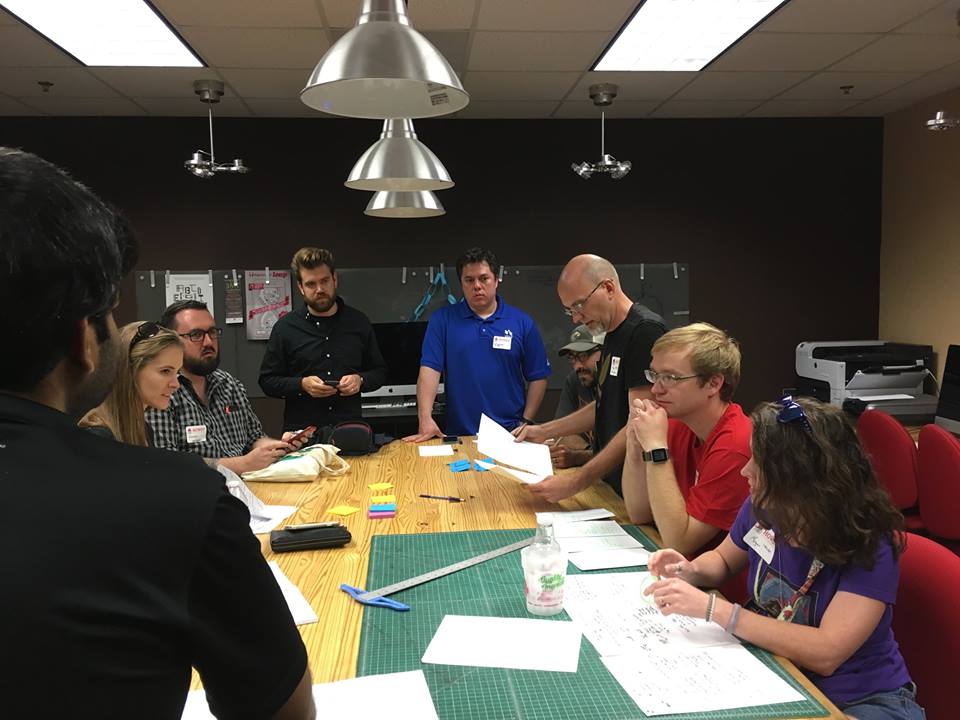Design workshops and theory lectures
My biggest professional passion, outside of design strategy and innovation is teaching. Since graduating from Ohio State I have been spending a lot of time back in the classroom. I have focused mainly on technical skills like sketching and photoshop, but have recently expanded into theory, educating non-designers on design theory and the application of Industrial Design foundations and processes on other activities. I most recently served as an adjunct professor teaching Solidworks at Ohio State to Sophomores.
Teaching Carnegie Mellon graduate students about sketching.
Workshops
My core work in the classroom has been centered around skills workshops. I have taught undergraduates at Ohio State how to do Photoshop rendering and graduate students at Carnegie Mellon how to do everything from the initial line on the page up to making semi realistic photoshop sketches. Sketching is, at it's most basic, a communication tool, and one that when used effectively is extremely conducive to shared understanding. Teaching business, engineering and policy students how to harness this tool is rewarding and empowering.
Personal attention
Believing that access to feedback fosters growth, I make myself available as a perpetual resource to students in my classes and demonstrations. Individual feedback is crucial when learning skills because everyone's work is a little bit different. It takes eyes on the paper (or screen) to help guide the pupil. Within the CMU cohort, we have set up a slack channel where I give specific feedback to sketches within a couple of hours.
With (most of) my sophomores at the end of our year together. I taught 3D modeling, rendering, animation and worked in some general design-thinking. I learned a lot about personal learning styles, communication, mentorship and communication.
Classroom
Reaching many students at once requires a classroom setup. In these scenarios it is important to check for understanding. Though many students will affirm that they are caught up and understand, it is important to read between the lines and pause the demonstration when some are falling behind.
Community Outreach
At Springbox I created and chaired an outreach committee to host young designers, give portfolio feedback and attend events at local colleges. This was a way for us to give back to the design community.
Throughout my career I have hosted the following demonstrations:
Lunch and Learn: Industrial Design Thinking and Applications to UX at Springbox
Three Part Sketching Tutorial at Carnegie Mellon University
Photoshop rendering Tutorial at Ohio State University
Industrial Design Trivia game at CCAD for IDSA
Industrial Design Portfolio review at University of Texas at Austin
Industrial Design Introduction and overview at Taylor High School, Taylor, TX
With Duncan Robertson, I represented Springbox at the Texas State University Smart City Hackathon. We acted as mentors to the teams and judges of their final projects. Read more here.




